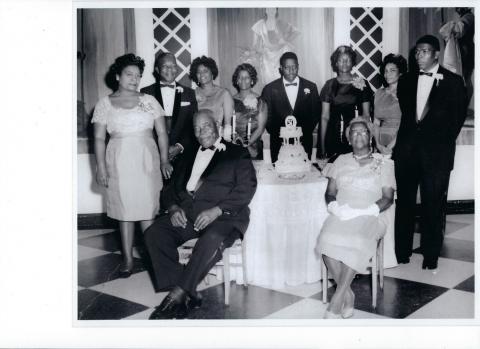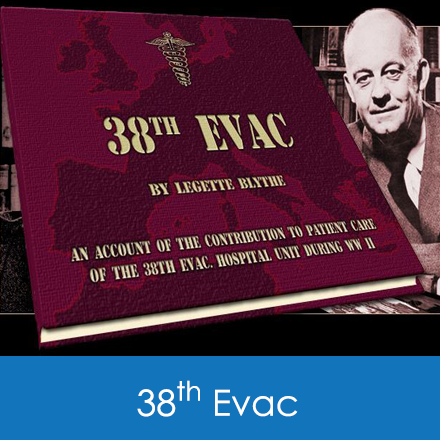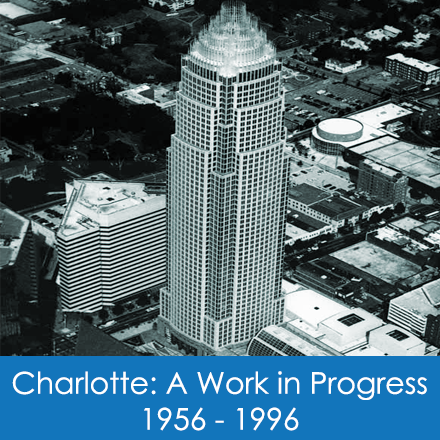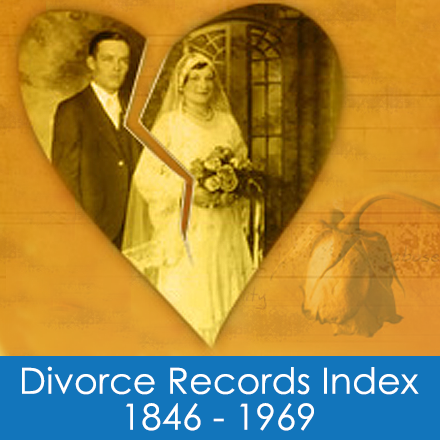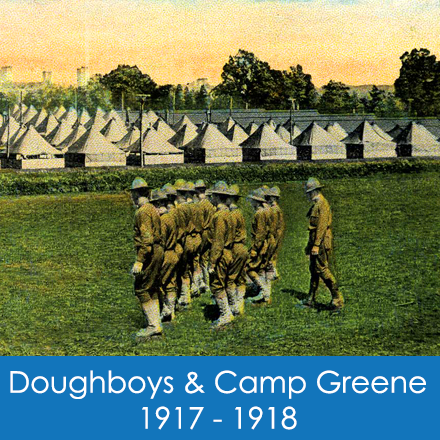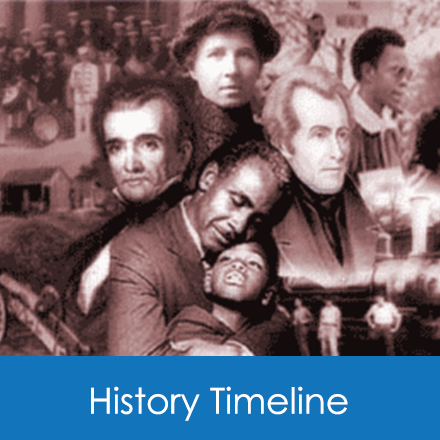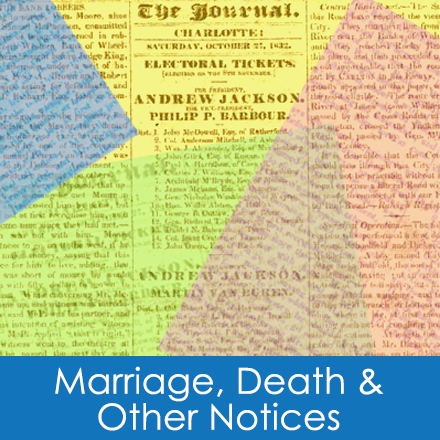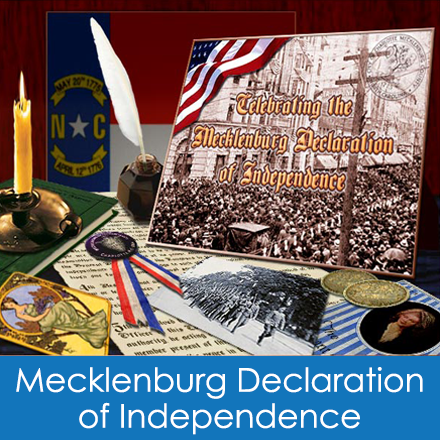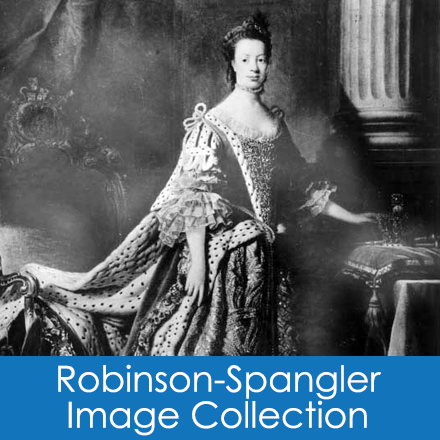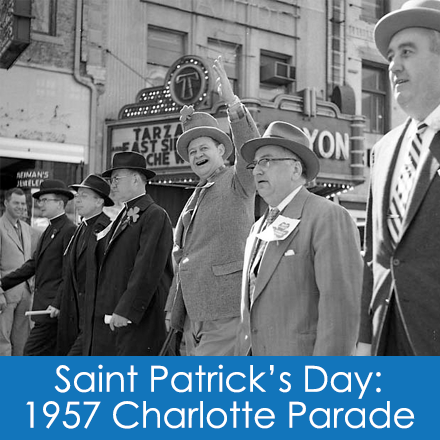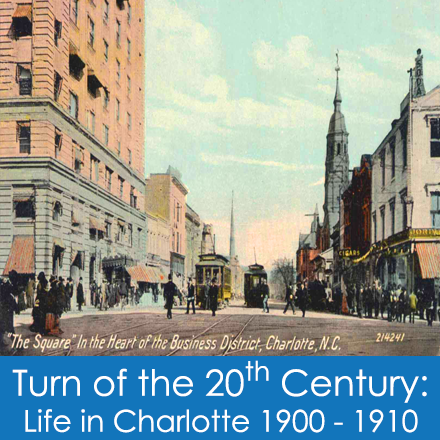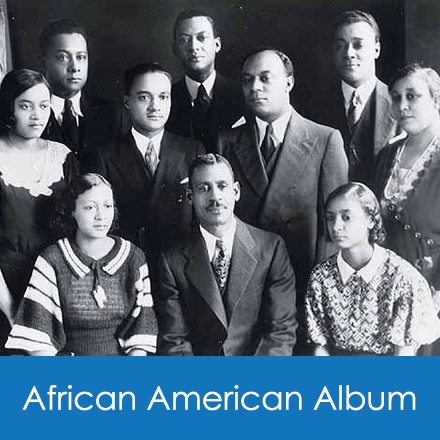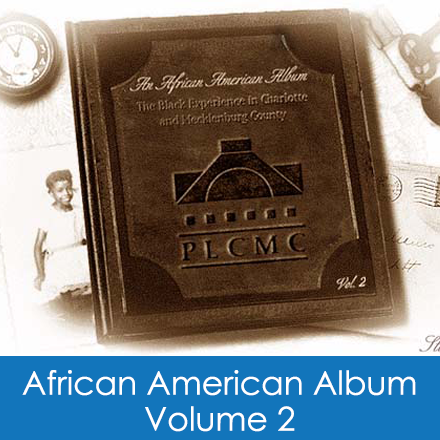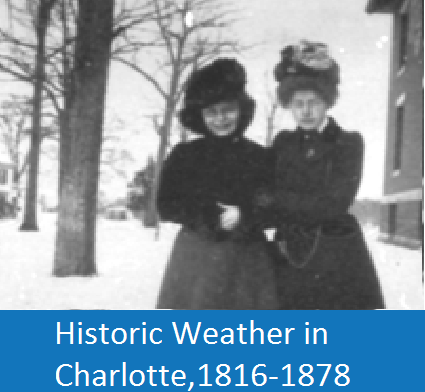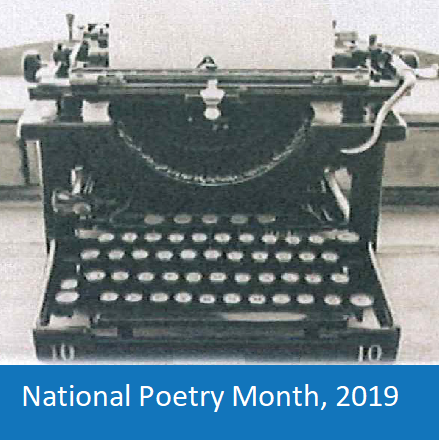The book, 38th Evac by LeGette Blythe, compiled from letters written to family members at home, is an account of the contribution to patient care...
|
Reverend Billy Graham looks back at special memories of his childhood. The son of a dairy farmer, he lived near the present-day intersection of...
|
This fascinating online exhibit offers an index of local cemeteries, a directory of local funeral homes, and information about local stone cutters...
|
An exhibit that explores the legacy of this city throughout its many changes.
|
Many of the phenomenal changes that have taken place in Charlotte over the past 40 years have been captured by Charlotte Observer photographers...
|
Genealogists often assume a spouse died, when second families are created. Other couples married and divorced twice. Search by name the...
|
Don Martin (1919-1999) worked for the Tom Franklin Studio and the Charlotte News, after serving at Camp Butner in north central North Carolina....
|
An in-depth look at Mecklenburg's involvement in "the war to end all wars". Includes personal accounts, online books, virtual tours and image...
|
Dr. Annie Lowrie Alexander (1864-1929) was the first licensed woman physician to practice in North Carolina. Born in the final years of the Civil...
|
When World War II ended in 1945, many of Charlotte and Mecklenburg County, North Carolina’s servicemen came home, but over eight hundred could not...
|
A photographic exhibit of the Highland Park Mill community from the collections of Mrs. Lois Moore Yandle.
|
Welcome to over 400 years of history at your fingertips. This timeline provides information about events significant to Charlotte and Mecklenburg...
|
Wonder what was going on locally while a war was being fought in many places in the world? Visit this site to learn more about the lives, times...
|
Hornets' Nest was published in 1961 by the Public Library of Charlotte and Mecklenburg County. Although now dated in its approach and lacking in...
|
Notices appearing in county newspapers before 1900. Providing information, from details on individuals, to business and neighborhoods, to the sale...
|
Historical accounts of events celebrating the signing of the debated "Meck. Dec." Facts regarding the document are also presented, allowing...
|
Historically significant people of Mecklenburg County.
|
Learn all about the short-lived, depression era teams, owners and players that made up the Outlaw Carolina Baseball League.
|
Look back in time and explore the artistry of early Charlotte photographers in this exhibit. Many photographers are identified, with splendid...
|
Rose Leary Love's memoir of life in the lost Charlotte neighborhood of Brooklyn during the early twentieth century. Brooklyn, a city within a city...
|
Curiosity seekers and researchers alike can now locate thousands of historical photographs and postcards of Charlotte and Mecklenburg County...
|
These Charlotte Observer photographs offer a cheery, if blurry glimpse of the community's second annual St. Patrick's Day parade held on Saturday...
|
View an exhibit about Mecklenburg County, NC and the Spanish-American War, including a database of veterans who served, excerpts from an unknown...
|
Our time traveling website takes you to Charlotte, NC during the early 1900s. Discover what life was like over one hundred years ago.
|
Over 200 photographs of streets, homes, businesses, and public buildings in the year 2000. This exhibit gives viewers a look at what is the same,...
|
Published by the Public Library of Charlotte and Mecklenburg County in 1992. The book, now out of print, is made up of photographs donated by...
|
This online exhibit displays content from An African American Album, Volume 2, a CD-ROM published by the Charlotte Mecklenburg Library in...
|
|
|
Notable weather events in Mecklenburg from the days before official record-keeping.
|
This exhibit traces the history of Mecklenburg County's efforts to care for the needy.
|
An annotated photo gallery of signs carried in Charlotte on March 24, 2018, as part of the "March for Our Lives"
|
A private library begun in 1891 became a free public library in 1903 with support from the community and philanthropist Andrew Carnegie. That...
|
Names of residents of Mecklenburg County who served in armed forces during wartime.
|
In April, 2019, Library staff and volunteers participated in National Poetry Month.
|
This exhibit celebrates the Hargrave Family of Charlotte, NC. The primary focus of the exhibit includes the Zoel and Fanny Hargrave 50th...
|
|
